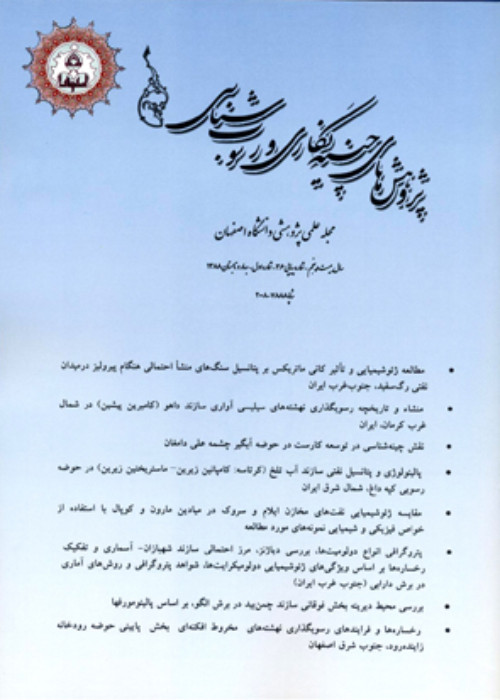Biological evolution of the carbonate platform of the Taleh Zang Formation in Kermanshah region
In this paper, the biological evolution of the carbonate platform of the Taleh Zang Formation with Paleocene age in the Kermanshah region has been investigated in two stages (time interval) concentrating on fossil debris (such as algae, corals, and benthic foraminifera). For this purpose, two suitable stratigraphic of this formation in the south (Kaboutar Bala section) and southwest (Barikeh section) of Kermanshah were selected, sampled, and studied. For a broader view, the results of this study have been compared with other parts of Tethys basin around the world. The depositional environment of the studied deposits of the Taleh Zang Formation is a carbonate ramp and is probably a form a low gradient ramp due to underdeveloped coral constructions. The gradient of this platform increases from the northwest (Barikeh section) to the southwest (Kaboutar Bala section). Four biofacies were recognized in the studied successions, which include green algae, coral, green algae and benthic foraminifera as well as benthic foraminifera and green algal biofacies. In the lower parts of the Taleh Zang Formation, the presence of algal and coral biofacies (patch reefs) indicates the first stage of carbonate biological evolution of this formation, in that such biofacies has been identified in the Paleocene sequences of other Tethys sectors. Throughout the time and in the upper parts of the Taleh Zang Formation, corals have disappeared and the abundance of green algae is greatly reduced. By the presence of benthic foraminifera with low amounts of green algae, the second stage of the biological evolution of the carbonate platform of the Taleh Zang Formation in the Kermanshah region is formed. In the Early Eocene in Kermanshah region and in the studied successions, due to the seawater regression, the production of carbonates in the Taleh Zang Formation stopped and the detrital red sediments of the Kashkan Formation replaced the carbonates of the Taleh Zang Formation. However, the carbonate production of this formation continued in other areas of the Zagros sedimentary basin (Lorestan province) until the Middle Eocene.
- حق عضویت دریافتی صرف حمایت از نشریات عضو و نگهداری، تکمیل و توسعه مگیران میشود.
- پرداخت حق اشتراک و دانلود مقالات اجازه بازنشر آن در سایر رسانههای چاپی و دیجیتال را به کاربر نمیدهد.


